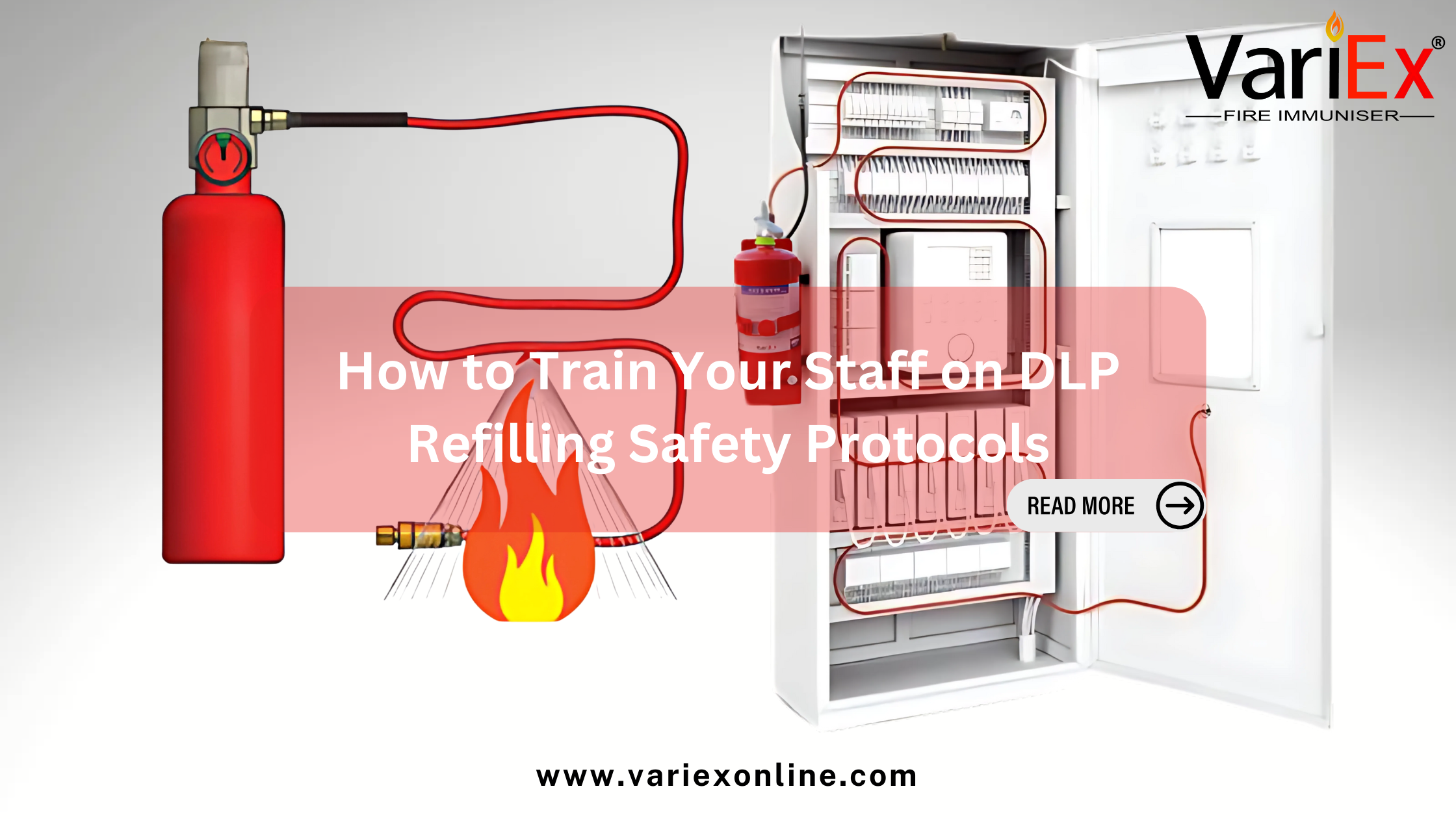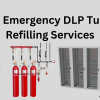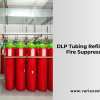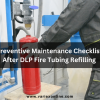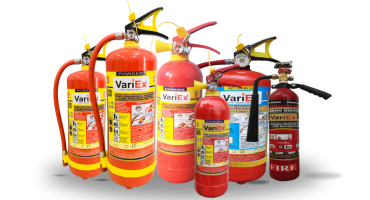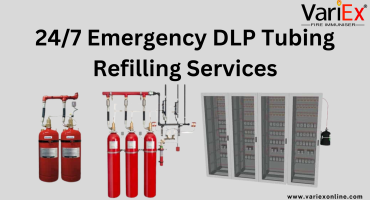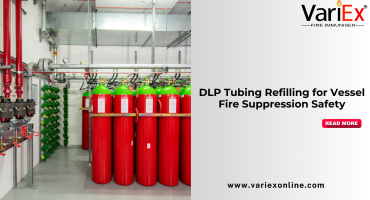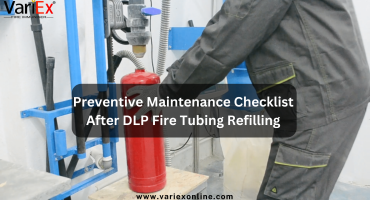![]()
Fire Immuniser
+91-7829629111
Email: info@variex.in
Varistor Technologies Pvt. Ltd.
Block-1, First Floor, Ardente Office One, Hoodi Circle, ITPL Main Road, Bengaluru, Karnataka 560048, IN
How to Train Your Staff on DLP Refilling Safety Protocols
How to Train Your Staff on DLP Refilling Safety Protocols
In high-risk environments, fire safety can never be left to chance. One of the most overlooked yet critical areas is training staff on DLP (Direct Low Pressure) refilling safety protocols. DLP systems play a vital role in fire suppression, especially in sensitive or high-value areas like server rooms, control centers, and industrial facilities. If these systems are improperly refilled or mishandled, the results could be catastrophic—including system failure during an actual fire event.
Proper staff training ensures that DLP systems are refilled safely, inspected regularly, and maintained in compliance with industry standards. This blog explores how to develop and implement a comprehensive DLP refilling training program for your team.
What Is a DLP Fire Suppression System?
DLP, or Dry Liquid Propellant, fire suppression systems are designed to extinguish fires quickly using clean agents like inert gases or chemical compounds. These systems are non-conductive, residue-free, and ideal for protecting sensitive equipment. DLP cylinders must be refilled after discharge or if routine inspection shows reduced pressure or expired chemicals.
Training your team to handle these systems correctly not only prevents workplace hazards but also ensures regulatory compliance with safety standards such as NFPA 2001, OSHA, and ISO 14520.
Importance of Staff Training for DLP Refilling
Here are several reasons why training staff on DLP refilling safety is non-negotiable:
-
Reduces risk of injury or property damage
-
Ensures compliance with fire safety laws
-
Minimizes downtime in high-risk environments
-
Promotes a culture of safety and accountability
-
Avoids expensive regulatory fines
Untrained personnel handling DLP systems can make costly mistakes such as incorrect pressurization, valve mishandling, or chemical spills.
Components of an Effective DLP Refilling Training Program
To ensure your staff is fully prepared, include the following components in your training strategy:
-
Theory of Fire Suppression and DLP Systems
-
Hands-on Demonstration of Equipment
-
Step-by-Step Refilling Procedures
-
Emergency Response & Spill Management
-
Inspection Checklists and Documentation
-
Regulatory Compliance Overview
-
Simulation and Drills
Table: Key Elements of a DLP Refilling Training Program
| Training Module | Objective | Duration |
|---|---|---|
| DLP System Overview | Understand components and types of DLP systems | 1 hour |
| Refilling Safety Procedures | Learn proper refill steps and equipment use | 2 hours |
| Emergency Handling & Spill Control | Manage chemical spills and equipment failure | 1.5 hours |
| Regulatory Compliance | Cover NFPA, OSHA, and local code requirements | 1 hour |
| Hands-On Simulation & Testing | Practical refilling under supervision | 2–3 hours |
| Final Assessment & Certification | Test knowledge and issue completion certificates | 1 hour |
Step-by-Step: How to Train Staff on DLP Refilling Safety Protocols
1. Assess Your Team’s Current Knowledge
Start by evaluating the fire safety awareness of your staff. Use quizzes or conduct interviews to identify knowledge gaps. Prioritize training for teams working directly with suppression systems.
2. Develop a Structured Curriculum
Design a curriculum tailored to your organization’s DLP systems and risk level. Include both theoretical and practical sessions. Partner with fire safety consultants or use certified third-party trainers for professional input.
3. Use Visuals and Real Equipment
Whenever possible, train using actual DLP cylinders, gauges, refilling tools, and protective gear. Visual learners retain more when they can see and touch the tools they’ll use.
4. Demonstrate the Full Refilling Process
Walk staff through every step, including:
-
Disconnecting the system
-
Pressure release
-
Chemical replacement
-
Cylinder inspection
-
Sealing and tagging
-
Documentation
Repeat these demonstrations and allow staff to practice under supervision.
5. Focus on Safety Gear and PPE
Emphasize the importance of wearing appropriate PPE, including gloves, face shields, and fire-retardant clothing. Training must also include safe chemical handling and first aid for accidental exposure.
6. Include Emergency Scenarios
Teach your team how to respond to:
-
Chemical leaks
-
Over-pressurization
-
Equipment failure
-
System discharge
Simulated drills make the learning experience more realistic and memorable.
7. Conduct Written and Practical Assessments
Assess trainees through a combination of:
-
Multiple-choice theory tests
-
Practical demonstrations
-
Verbal Q&A sessions
Those who pass should receive certificates as proof of competency.
8. Establish a Refresher Training Schedule
DLP refilling training should not be a one-time event. Schedule refresher courses every 12–24 months, especially when new equipment or safety regulations are introduced.
Legal and Compliance Considerations
Failing to provide adequate training can result in:
-
OSHA violations
-
Insurance claim rejections
-
Failed fire safety audits
-
Increased liability in emergencies
Ensure your training program aligns with:
-
NFPA 2001 – Clean Agent Systems
-
OSHA 1910.157 – Portable Fire Extinguishers
-
ISO 14520 – Gaseous Fire Suppression Systems
Benefits of DLP Refilling Training for Your Business
-
Reduces workplace fire risks
-
Enhances team confidence and morale
-
Streamlines maintenance procedures
-
Supports fast emergency response
-
Improves audit readiness and legal compliance
Training also empowers staff to act swiftly and correctly in the event of a fire, reducing damage and downtime.
Common Mistakes to Avoid in Staff Training
-
Relying on outdated safety protocols
-
Skipping hands-on simulations
-
Assuming all staff understand fire systems
-
Using generic training instead of system-specific modules
-
Failing to document attendance and certifications
Avoid these pitfalls to maintain a compliant and fire-ready workplace.
Conclusion:
Training your staff on DLP refilling safety protocols isn’t just about passing audits—it's about creating a culture of safety and preparedness. With the right training program, your team will be confident, competent, and ready to handle DLP systems safely and effectively. Don’t wait for an emergency or a failed inspection to highlight your training gaps. Invest in DLP refilling education today for a safer tomorrow.
Frequently Asked Questions
Any staff member responsible for maintenance or fire safety oversight should be trained, especially those in industrial or high-risk environments.
Initial training should be followed by refresher sessions every 12–24 months or when new systems are introduced.
Yes, if they are certified and trained properly. Otherwise, use a professional fire safety technician.
Training should align with NFPA, ISO, or local fire safety certifications depending on your region.
A complete DLP safety training session, including theory and hands-on practice, typically takes 6–8 hours.
Final Say
At VariEx.in and VariexOnline.com, we specialize in supplying and installing top-quality fire fighting systems and equipment. From fire extinguishers to advanced suppression systems, we offer comprehensive solutions tailored to your needs. Our experienced team ensures precise installation and maintenance for optimal safety.
Trust VariEx for reliable fire protection. Contact us online or call 7829629111 to learn more.
We specialize in manufacturing, supplying, and distributing a comprehensive range of fire fighting equipment, including state-of-the-art fire extinguishers. Read our most searched blogs and find interesting information on topics such as how to use a fire extinguisher, how to calculate fire fighting water tank capacity, fire extinguisher refilling, obtaining a Fire NOC, understanding fire fighting systems, types of fire protection systems, the fire hydrant system, and the fire sprinkler system. These resources provide essential knowledge for ensuring safety and compliance with fire safety regulations. Additionally, you can explore guides on the maintenance of fire protection equipment, the latest advancements in fire safety technology, and best practices for fire risk assessment and management.
Our expertise extends to fire alarm systems, fire hydrant systems, and fire suppression systems, including fire sprinklers. Each product meets rigorous international standards for reliability and performance, ensuring effective fire safety products tailored to diverse applications and industries. Additionally, we are providing Fire Extinguisher Refilling and AMC services to ensure ongoing maintenance and operational readiness of fire safety equipment.


